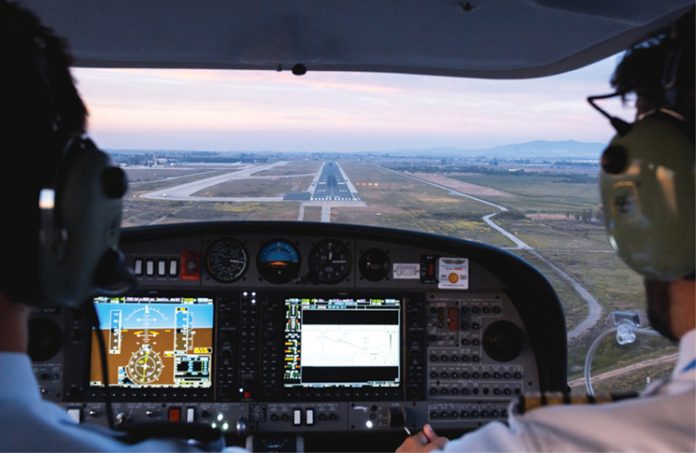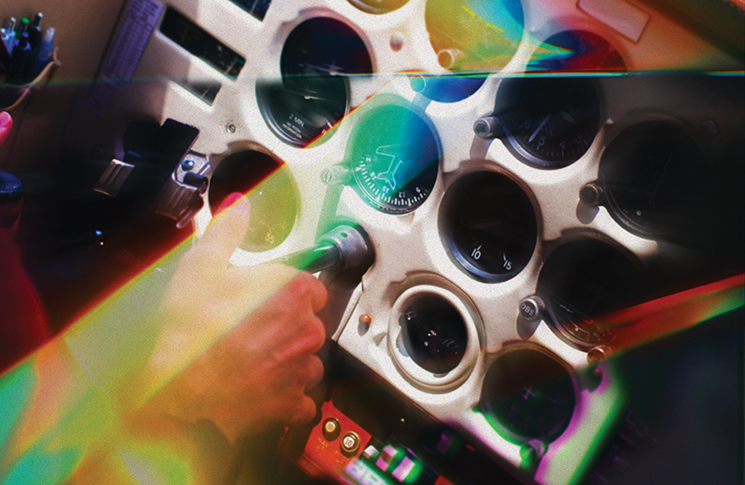- Ground-based augmentation system (GBAS) has the advantage of overcoming which limitation of the standard ILS approach?
- it can be used by any RNAV/GNSS equipped aircraft
- while ILS critical areas require protection from interference, a GBAS landing system (GL) has no localiser scalloping when an aircraft passes in front of the antenna or through the ILS critical protected area
- it protects aircraft from altimeter temperature-based errors
- only one GBAS frequency is required to be tuned for multiple GLS approaches at the same airport, which prevents aircrew from selecting the wrong frequency for the runway approach
- Which of the following equipment is required to conduct a GLS approach?
- standard ILS receiver
- autopilot and flight director, capable of providing lateral and vertical guidance linked to an LPV capable avionics system
- GBAS-capable avionics system
- VHF receiver capable of tuning frequencies in the 107.500 to 117.500 MHz band
- GBAS, or GLS, is subject to which of the following limitations?
- there are no errors, as the position information is corrected and constantly broadcast to aircraft using the precise ground-based location
- the effect of disturbances in the ionosphere on the satellite signals can lead to positioning errors and even the interruption of service
- rated coverage is 30 nm compared to 50 nm for a LLZ
- rated coverage is only applicable within 10 degrees of the approach course
- GLS differs from an ILS when tuning an approach into Sydney (YSSY), as it is selected by which method?
- selection of a 5-digit channel into a GBAS-capable multimode receiver
- selection of a single 5-digit frequency that covers all approaches for the airport, and then specifying the runway required
- selection of an APV/LPV approach in the aircraft avionics system
- selection of the approach in the same manner as an RNP RNAV approach
- Rated coverage of a GLS at YSSY for the conduct of an approach is:
- identical to LLZ limitations
- no rated coverage limitations, if GPS RAIM is assured
- no distance limitation, but aircraft has to be within 10 degrees of the final approach course
- 23 nm from the GBAS site
- 50 nm
- The final approach segment of a 3D approach contains a fix at which the glide path/altimeter relationship should be verified. If the check indicates an unexplained discrepancy, then:
- ILS approaches should be discontinued but GLS approaches can be continued
- no adjustment is required if the altimeter reads higher than the check height
- ILS and GLS approaches should be discontinued
- GLS approaches are geometric based, meaning you are protected for incorrect altimeter settings
- To ensure obstacle clearance, final approach course and glideslope tracking should be maintained to within what tolerances?
- half-scale deflection for GLS, full-scale deflection for ILS
- after the FAP, a missed approach should be commenced if the LOC/GLS or glideslope indicates full-scale deflection
- full-scale deflection for the GLS, half-scale deflection for an ILS
- full-scale deflection for the glideslope, half-scale deflection for the LOC/GLS
- The symbol at position OLSOG on the vertical profile for GLS RWY 34R represents:
- the final approach point
- the final approach fix
- the altimeter checkpoint
- no relevance for GLS approaches
- When cleared for a visual approach at night into Sydney for RWY 34R, the requirements to continue descent include being established:
- within 14 nm and less than full-scale deflection of the ILS or GLS glide path
- within 10 nm and less than full-scale deflection of the ILS or GLS glide path
- within 14 nm and not below the ILS or GLS glide path with less than full-scale azimuth deflection
- within 10 nm and not below the ILS or GLS glide path with less than full-scale azimuth deflection
- After reporting visual and being cleared for a visual approach to RWY 34R at YSSY, a go-around is performed in VMC. The go-around procedure is to:
- maintain runway track, climb to circuit altitude, contact ATC as soon as practical
- maintain runway heading, climb to 2,000 feet
- maintain runway track, climb to 1,500 feet, contact ATC for further instructions
- be flown in accordance with the GLS or ILS missed approach procedure for the runway the aircraft is using or as directed by ATC





